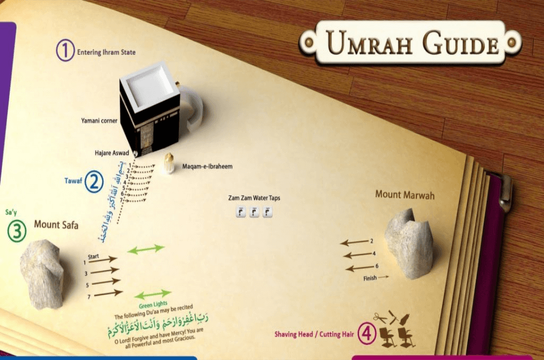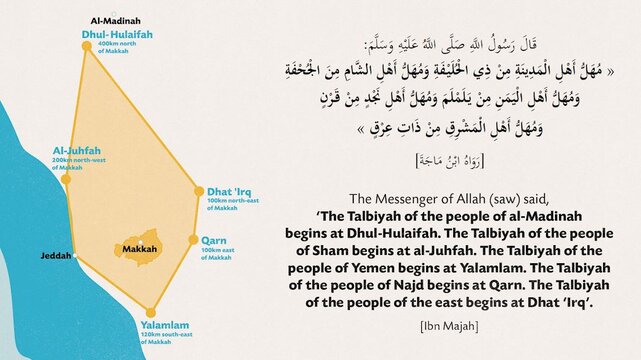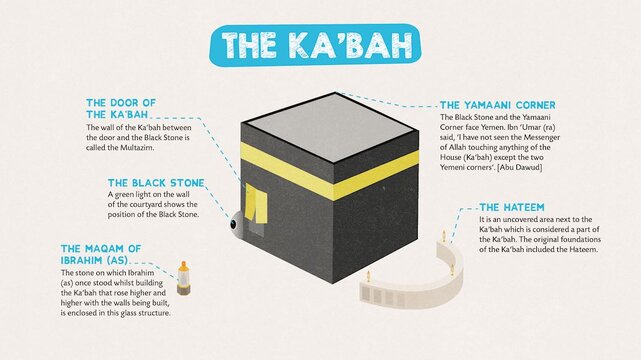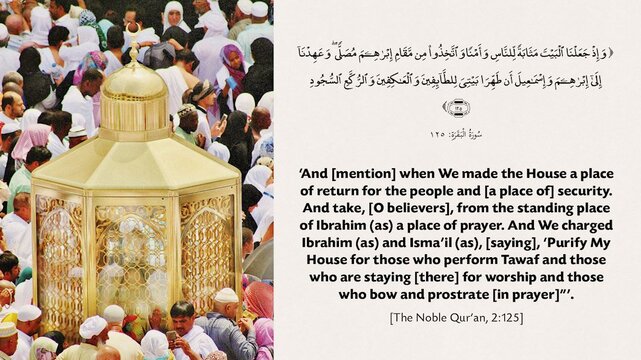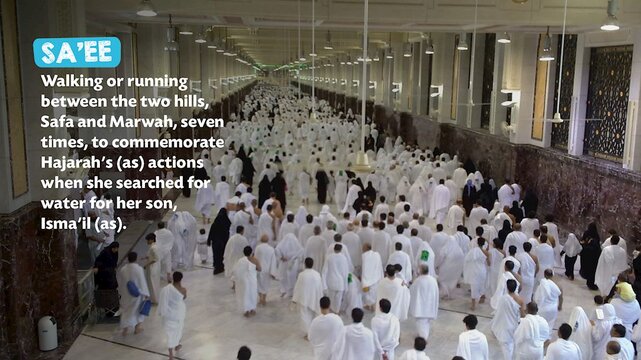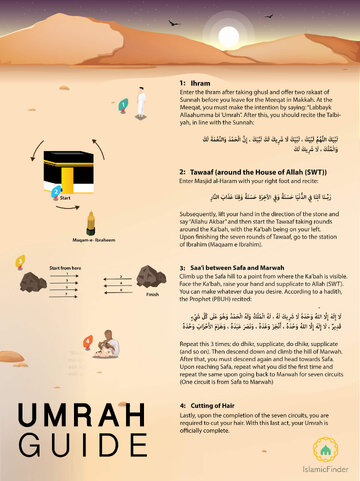Step by Step Guide to Performing an Umrah
Umrah is an Islamic pilgrimage and is, in short, an act of worship of Allah (SWT). It is based on the teachings of the Holy Prophet (PBUH) and his Sunnah. The pilgrimage is a visit to the House of Allah (SWT) and can be carried out any time of the year. It is known as a ‘minor pilgrimage’ in comparison to the ‘greater pilgrimage’ of Hajj. However, it holds great value and virtue in the eyes of Allah (SWT).
The Umrah comprises of four basic pillars:
1) Ihram
Ihram is essentially making the formal ‘intention’ of performing the Umrah. In order to enter the fold of Ihram, the individual must change clothes and take a proper bath (ghusl) which showcases an act of washing away all impurities. Men change into the two fabrics, Ridaa and Izaar, whereas women can wear any form of clothing which covers the body and head. Women who are menstruating or experiencing postnatal bleeding are also advised to perform ghusl.
Upon the cleansing, the individual should perform the obligatory prayers or offer two rakaat of Sunnah prayer. Once that is done, the individual should face the direction of the Qibla and officially enter Ihram – the individual must enter Ihram before he/she leaves for the Meeqat in Makkah. Perfume or perfumed products are strictly prohibited while a person is in his/her Ihram.
At the Meeqat, the pilgrim must make the intention and recite the words:
“Labbayk Allaahumma bi ‘Umrah”
(Here I am, O Allah, for ‘Umrah)
After this, he/she should recite the Talbiyah, in line with the Sunnah:
“Labbayka Allaahumma labbayk, labbayka laa shareeka laka labbayk. Inna al-hamd wa’l-ni’mata laka wa’l-mulk, laa shareeka lak”
(Here I am, O Allah, here I am. Here I am, You have no partner, here I am. Verily all praise and blessings are Yours, and all sovereignty, You have no partner).”
It is advised that the individual keep reciting the Talbiyah from the moment he/she enters Ihram until he/she gets to the performance of the Tawaaf.
2) Tawaaf (around the House of Allah (SWT))
The pilgrim must then enter Masjid al-Haram, and that too with his/her right foot and recite:
“Bismillaah wa’l-salaatu wa’l-salaam ‘ala Rasool-Allaah. Allaahumma ighfir li dhunoobi waftah li abwaab rahmatika. A’oodhu Billaah il-‘Azeem wa bi wajhih il-kareem wa bi sultaanih il-‘qadeem min al-Shaytaan il-rajeem”
(In the name of Allah, and blessings and peace be upon the Messenger of Allah. O Allah, forgive me my sins and open to me the gates of Your mercy. I seek refuge with Allah the Almighty and in His noble Countenance and His eternal power from the accursed Satan).”
The pilgrim can then touch the Black Stone (Hajr e Aswad) and start the Tawaaf. Ideally, the pilgrim should touch it with his right hand and then kiss it. If, however, he/she is unable to kiss it directly, he/she can touch it with his/her hand then kiss his/her hand. There is great virtue in touching the Black Stone. If he/she cannot even touch the stone with his/her hand, the pilgrim should face his/her hand in the direction of the stone and say “Allahu Akbar”. Then the pilgrim starts the Tawaaf – taking rounds around the Ka’bah, with the Ka’bah being on their left. One must be careful not to touch the cloth of the Ka’bah during Tawaaf as it is perfumed and touching it might rub off some of the perfume onto you making the state of Ihram void.
Men must keep the right shoulder uncovered during the Tawaaf, which is known as Idtibaa. This is done by placing the Ridaa beneath the right armpit and taking it up on the left shoulder. Moreover, the men must practice ‘raml’ in the first three rounds of Tawaaf, which is essentially walking fast while taking small steps. For the rest of the rounds, they can walk on their normal place.
Upon finishing the seven rounds of Tawaaf, the pilgrim must then go to the station of Ibrahim (Maqaam e Ibrahim) and recite the following words:
“And take you (people) the Maqaam (place) of Ibraaheem (Abraham) [or the stone on which Ibraaheem (Abraham) stood while he was building the Ka’bah] as a place of prayer (for some of your prayers, e.g. two Rak‘at after the Tawaaf of the Ka’bah at Makkah)” (Surah Baqarah:125)
The pilgrim should then offer two rakaat of prayer behind Maqaam e Ibrahim. If that is proving difficult, the pilgrim can offer the prayers in any spot of the mosque. During the first rakah, Surah Al-Kafirun (109) is recited and for the second rakah, Surah Al-Ikhlaas (112) is recited. Upon offering the prayer, the individual should head back to the Black Stone and touch it if possible.
3) Saa’i between Safa and Marwah
The pilgrim should then head for the place of Saa’i (Masaa) and when he/she nears the hill of Safa, the following should be recited:
Umrah is an Islamic pilgrimage and is, in short, an act of worship of Allah (SWT). It is based on the teachings of the Holy Prophet (PBUH) and his Sunnah. The pilgrimage is a visit to the House of Allah (SWT) and can be carried out any time of the year. It is known as a ‘minor pilgrimage’ in comparison to the ‘greater pilgrimage’ of Hajj. However, it holds great value and virtue in the eyes of Allah (SWT).
The Umrah comprises of four basic pillars:
1) Ihram
Ihram is essentially making the formal ‘intention’ of performing the Umrah. In order to enter the fold of Ihram, the individual must change clothes and take a proper bath (ghusl) which showcases an act of washing away all impurities. Men change into the two fabrics, Ridaa and Izaar, whereas women can wear any form of clothing which covers the body and head. Women who are menstruating or experiencing postnatal bleeding are also advised to perform ghusl.
Upon the cleansing, the individual should perform the obligatory prayers or offer two rakaat of Sunnah prayer. Once that is done, the individual should face the direction of the Qibla and officially enter Ihram – the individual must enter Ihram before he/she leaves for the Meeqat in Makkah. Perfume or perfumed products are strictly prohibited while a person is in his/her Ihram.
At the Meeqat, the pilgrim must make the intention and recite the words:
“Labbayk Allaahumma bi ‘Umrah”
(Here I am, O Allah, for ‘Umrah)
After this, he/she should recite the Talbiyah, in line with the Sunnah:
“Labbayka Allaahumma labbayk, labbayka laa shareeka laka labbayk. Inna al-hamd wa’l-ni’mata laka wa’l-mulk, laa shareeka lak”
(Here I am, O Allah, here I am. Here I am, You have no partner, here I am. Verily all praise and blessings are Yours, and all sovereignty, You have no partner).”
It is advised that the individual keep reciting the Talbiyah from the moment he/she enters Ihram until he/she gets to the performance of the Tawaaf.
2) Tawaaf (around the House of Allah (SWT))
The pilgrim must then enter Masjid al-Haram, and that too with his/her right foot and recite:
“Bismillaah wa’l-salaatu wa’l-salaam ‘ala Rasool-Allaah. Allaahumma ighfir li dhunoobi waftah li abwaab rahmatika. A’oodhu Billaah il-‘Azeem wa bi wajhih il-kareem wa bi sultaanih il-‘qadeem min al-Shaytaan il-rajeem”
(In the name of Allah, and blessings and peace be upon the Messenger of Allah. O Allah, forgive me my sins and open to me the gates of Your mercy. I seek refuge with Allah the Almighty and in His noble Countenance and His eternal power from the accursed Satan).”
The pilgrim can then touch the Black Stone (Hajr e Aswad) and start the Tawaaf. Ideally, the pilgrim should touch it with his right hand and then kiss it. If, however, he/she is unable to kiss it directly, he/she can touch it with his/her hand then kiss his/her hand. There is great virtue in touching the Black Stone. If he/she cannot even touch the stone with his/her hand, the pilgrim should face his/her hand in the direction of the stone and say “Allahu Akbar”. Then the pilgrim starts the Tawaaf – taking rounds around the Ka’bah, with the Ka’bah being on their left. One must be careful not to touch the cloth of the Ka’bah during Tawaaf as it is perfumed and touching it might rub off some of the perfume onto you making the state of Ihram void.
Men must keep the right shoulder uncovered during the Tawaaf, which is known as Idtibaa. This is done by placing the Ridaa beneath the right armpit and taking it up on the left shoulder. Moreover, the men must practice ‘raml’ in the first three rounds of Tawaaf, which is essentially walking fast while taking small steps. For the rest of the rounds, they can walk on their normal place.
Upon finishing the seven rounds of Tawaaf, the pilgrim must then go to the station of Ibrahim (Maqaam e Ibrahim) and recite the following words:
“And take you (people) the Maqaam (place) of Ibraaheem (Abraham) [or the stone on which Ibraaheem (Abraham) stood while he was building the Ka’bah] as a place of prayer (for some of your prayers, e.g. two Rak‘at after the Tawaaf of the Ka’bah at Makkah)” (Surah Baqarah:125)
The pilgrim should then offer two rakaat of prayer behind Maqaam e Ibrahim. If that is proving difficult, the pilgrim can offer the prayers in any spot of the mosque. During the first rakah, Surah Al-Kafirun (109) is recited and for the second rakah, Surah Al-Ikhlaas (112) is recited. Upon offering the prayer, the individual should head back to the Black Stone and touch it if possible.
3) Saa’i between Safa and Marwah
The pilgrim should then head for the place of Saa’i (Masaa) and when he/she nears the hill of Safa, the following should be recited:
Prilozi
-
224.9 KB Pregleda: 104

